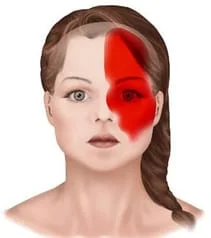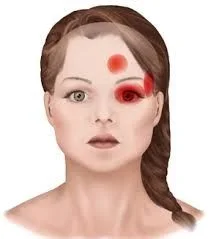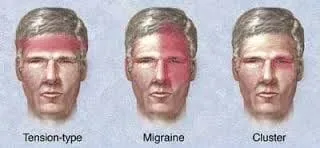Tension Headache and Neck Pain

Neck pain is often associated with strained neck muscles from poor posture. Working on a computer or hunching over a desk or workbench will create muscular tension that can lead to neck strain and eventual neck pain commonly associated with a dull achingand often headache. Neck injuries such as in whiplash or a herniated disc may also cause neck pain and tension headache where affected neck muscles meet the skull. Muscles across the head can becomestrained and painful resulting in a tension headache.
Neck pain can also be associated with numbness, tingling, tenderness, sharp shooting pain, and dizziness or lightheadedness. Other symptoms associated with some forms of neck pain may include facial pain, shoulder pain and numbness or tingling (upper extremity paresthesia).
It is estimated that approximately 90% of women and about 70% of men will suffer from the dull pressure and aches caused by tension-type headaches and neck pain at some time in their lives. Tension headaches can occur at any age, but most often in people between 20 and 50 years of age.
Management of a tension headache and neck pain will often include stress reduction techniques, chiropractic manipulative therapy, cranial therapy, muscle tension reduction techniques and the fostering of healthy habits. Additionally, over-the-counter (OTC) pain relievers such as Tylenol, Advil or Motrin may be helpful but have unwanted side effects and the body must detoxify them.
Migraine headache

Migraine attacks may last for hours and days and cause significant pain. Some migraines may be preceded or accompanied by warning symptoms called an aura,referring to feelings and symptoms before or as the headache begins.Aura may include tingling sensations in your arms or legs,blind spots in your vision and/or flashes of light.
Migraines are generally experienced more by boys than girls. However more adult women have migraines than adult men. Fortunately migraines oftenreduce over time and become less common after age 50.Migraines often run in families and substances, behaviors, and the environment may trigger migraines.
Migraines are typically managed with medication but we also know that there may be imbalances in brain chemicals and blood flow that can be managed with functional neurology and functional medicine. Additionally by identifying triggers and making lifestyle modifications the migraine sufferer can make a significant impact in controlling the frequency and intensity of these attacks.
Cluster headache

Frequent attacks, known as cluster periods, may last from days to weeks and even months. They are usually followed by remission periods for months or yearswhen the headache attacks stop completely. Cluster headaches are uncommon and not life-threatening.
Cluster headaches are not well understood but some scientists suggests that due to their periodicity the hypothalamus, a gland in our brain involved in regulating sleep and circadian rhythm, may be involved.
Treatments can help make cluster headache attacks shorter and less severe. Because the pain associated with a cluster headache is vascular treatment with functional neurology and functional medicine may be helpful. Oxygen is another type of treatment used in acute cluster headache attack with virtually no side effects. In addition, triptanmedications can help reduce the number of cluster headaches. Calcium-channel blockers such asVerapamil may be first-line preventive treatment for cluster headaches.

